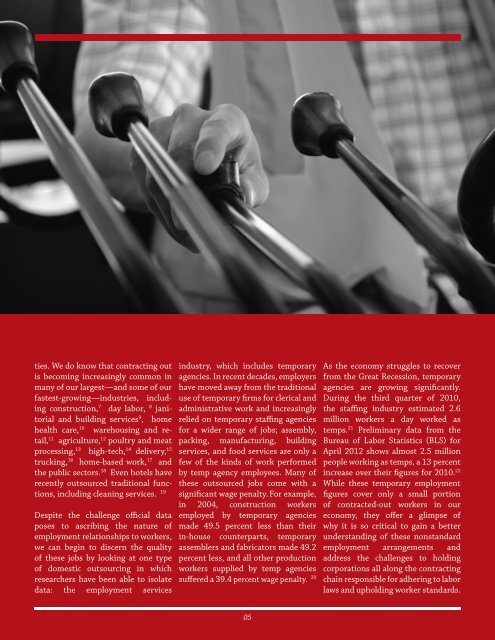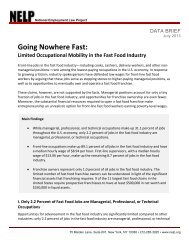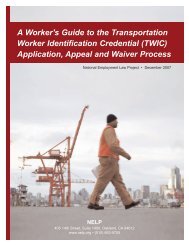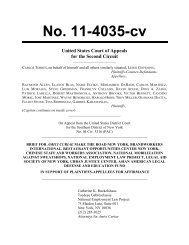Chain of Greed
Chain of Greed
Chain of Greed
- No tags were found...
Create successful ePaper yourself
Turn your PDF publications into a flip-book with our unique Google optimized e-Paper software.
ties. We do know that contracting outis becoming increasingly common inmany <strong>of</strong> our largest—and some <strong>of</strong> ourfastest-growing—industries, includingconstruction, 7 day labor, 8 janitorialand building services 9 , homehealth care, 10 warehousing and retail,11 agriculture, 12 poultry and meatprocessing, 13 high-tech, 14 delivery, 15trucking, 16 home-based work, 17 andthe public sectors. 18 Even hotels haverecently outsourced traditional functions,including cleaning services. 19Despite the challenge <strong>of</strong>ficial dataposes to ascribing the nature <strong>of</strong>employment relationships to workers,we can begin to discern the quality<strong>of</strong> these jobs by looking at one type<strong>of</strong> domestic outsourcing in whichresearchers have been able to isolatedata: the employment servicesindustry, which includes temporaryagencies. In recent decades, employershave moved away from the traditionaluse <strong>of</strong> temporary firms for clerical andadministrative work and increasinglyrelied on temporary staffing agenciesfor a wider range <strong>of</strong> jobs; assembly,packing, manufacturing, buildingservices, and food services are only afew <strong>of</strong> the kinds <strong>of</strong> work performedby temp agency employees. Many <strong>of</strong>these outsourced jobs come with asignificant wage penalty. For example,in 2004, construction workersemployed by temporary agenciesmade 49.5 percent less than theirin-house counterparts, temporaryassemblers and fabricators made 49.2percent less, and all other productionworkers supplied by temp agenciessuffered a 39.4 percent wage penalty. 20As the economy struggles to recoverfrom the Great Recession, temporaryagencies are growing significantly.During the third quarter <strong>of</strong> 2010,the staffing industry estimated 2.6million workers a day worked astemps. 21 Preliminary data from theBureau <strong>of</strong> Labor Statistics (BLS) forApril 2012 shows almost 2.5 millionpeople working as temps, a 13 percentincrease over their figures for 2010. 22While these temporary employmentfigures cover only a small portion<strong>of</strong> contracted-out workers in oureconomy, they <strong>of</strong>fer a glimpse <strong>of</strong>why it is so critical to gain a betterunderstanding <strong>of</strong> these nonstandardemployment arrangements andaddress the challenges to holdingcorporations all along the contractingchain responsible for adhering to laborlaws and upholding worker standards.05
















